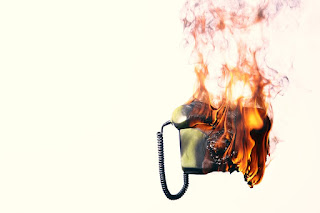When it comes to fire safety, commercial or residential, knowledge truly is power. Not knowing the basics may end up costing a few lives, which is something you want to avoid at all costs. By law, all industrial, commercial, residential, as well as health care facilities, are required to have properly installed fire safety equipment.
Fire Safety South Africa
Wednesday, 13 July 2016
Sunday, 5 June 2016
Why does fire smoke?
Have you ever considered why fire gives off smoke? It may seem like they should go together naturally, but there’s a whole process that causes a flame to create smoke. In which case, a fire can become extremely dangerous. Not just for the obvious dangers of a flame burning objects, but inhaling the smoke that comes from a fire can cause life-threatening complications.
Thursday, 5 May 2016
6 Sudden Work Winter Fire Hazards
The days are getting a little bit more winter-like, which means we’re all trying new things to stay warm in your workplace. However, with seasons changing, so are the potential fire hazards found in and the office. In order to protect yourself and your employees from potentially fatal accident that are easily avoidable, be sure to keep an eye out for the following fire hazard malfunctions:
Tuesday, 12 April 2016
What NOT to do during a fire outbreak
Fires can happen when we least expect it, due to negligence or natural hazards. Following the right procedures during an outbreak can potentially save your life and those around you, just like making mistakes can put your life in tremendous danger – causing you not perhaps not make it out alive.
Tuesday, 22 March 2016
The dangers of methanol fires
Methanol, also known as wood alcohol, is a highly toxic chemical used in everyday products to improve our lives. Used in biodiesel production, waste water treatments, racing fuel and even everyday products such as paint, it is a colourless, organic liquid at room temperature that’s completely water-soluble and an easily ignitable hydrocarbon in air. When burning, it gives off a blue flame, but when looking at it in daylight it looks invisible. When it comes to methanol fires, how do you fight something you cannot see?
Thursday, 18 February 2016
Different flame colours explained
Distinguishing between different flame colours can help extinguish
a fire significantly if you’re unsure of the origin. Depending on the nature of
the fuel/combustible material, the flame colour can differ – ranging anything from
red to greyish-white. Energy is emitted through flames in the form of light,
which is why flames are referred to as the visible part to any fire.
Wednesday, 2 December 2015
Keep Your Workplace Safe This Holiday Season
Everyone seems to
be catching holiday fever early this year! Unfortunately, many people will
still find themselves behind a desk while others are out absorbing the
sunshine.
Subscribe to:
Posts (Atom)






